Evidence for Water on Europa
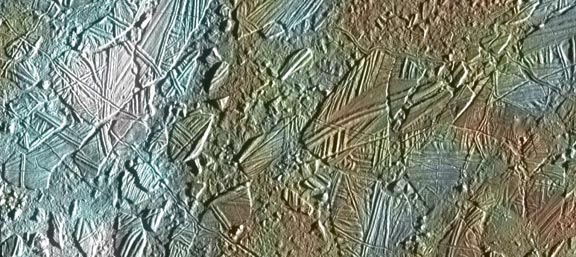
A small region of Europa's Conamara region. The white and blue colors highlight
regions covered by ice dust from the collision that created the Pwyll Crater. Disconnected
islands of ice are visible that have apparently rafted to new positions.
(Source: http://antwrp.gsfc.nasa.gov/apod/ap980102.html}
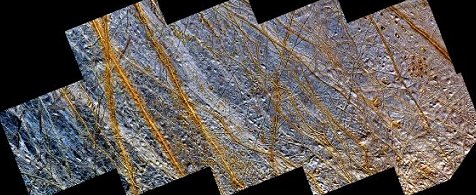
The picture above is a mosaic of images from Europa's southern
hemisphere. The brown, linear ridges extending across the scene are thought to be frozen
remnants of cryo-volcanic activity. "Cryo-volcanoes" (cold volcanoes)
occur when liquid or partially frozen water erupts onto the Europan surface, freezing
instantly in the extremely low temperatures so far from our sun. The ridges
are similar in appearance to those involved in seafloor spreading on Earth.
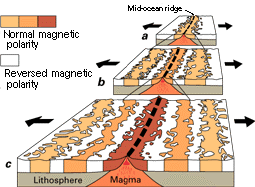
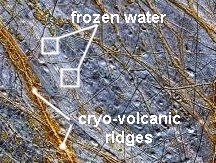
A geologically older, smoother surface, bluish in tone, underlies the ridge system.
The blue surface is composed of almost pure water ice, whereas the composition of the
dark, brownish spots and ridges is not certain. One possibility is that they contain
mineral salts in a matrix of
high water content.
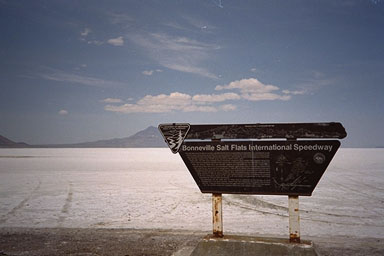
(Sources: http://www.science.nasa.gov/newhome/headlines/ast03dec98_1.htm
and
http://pubs.usgs.gov/publications/text/developing.html)
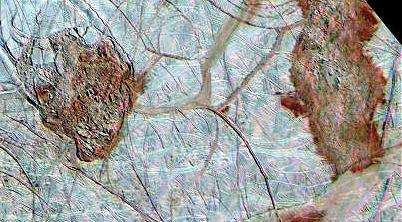
Thera (left) and Thrace (right) are two dark, reddish regions of
enigmatic terrain that disrupt
the older icy ridged plains on Jupiter's moon Europa. One model for the formation of these
and other chaos regions on Europa is a complete melt-through of Europa's icy shell from an
ocean below.
The surface may be salty in places. The best spectral match is to
magnesium sulfate, better known as Epsom salts. When warm
convecting ice rises up and hits a salty area it melts at a lower temperature than the
surrounding plains. This sort of process might explain regions like Thrace where we see
what appears to be melting and liquid-like flows across the surface. The best
candidates for the brown material are iron compounds or some sort of sulfur compound.
(Source: http://www.science.nasa.gov/newhome/headlines/ast09sep99_1.htm)

At temperatures above 170K, ice formed from liquid water or from 'warm'
water vapor has a hexagonal crystal, just like ice on Earth. If we could find
evidence for hexagonal ice crystals on Europa, it would mean that the ice formed fairly
recently from liquid water or warm vapor.
If hexagonal ice crystals are present on Europa, their signature may be seen using
Galileo's Near Infrared Mapping Spectrometer. When sunlight hits the surface of
Europa at near grazing incidence it penetrates the surface and refracts through the ice
crystals. Hexagonal crystals will produce a ring-like glow in the infrared much
like the familiar "ring around the Moon."
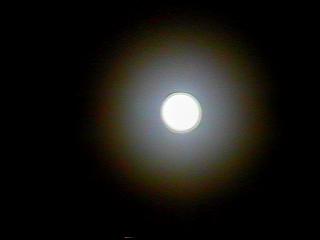
(Source: http://www.its.caltech.edu/~atomic/snowcrystals/gallery99/snow99.htm
http://www.science.nasa.gov/newhome/headlines/ast09sep99_1.htm
http://www.dxd.com/gallery.htm )
back | next








